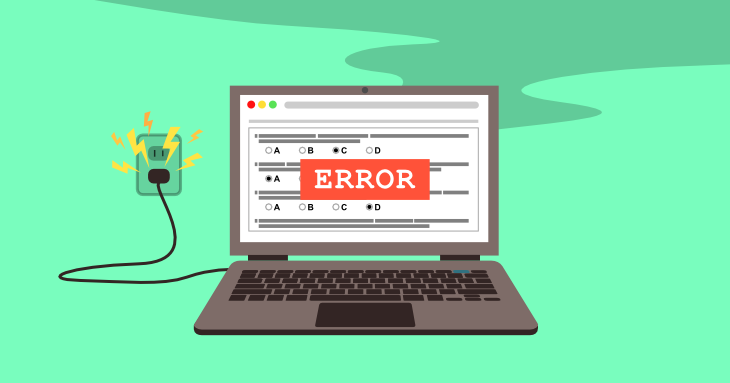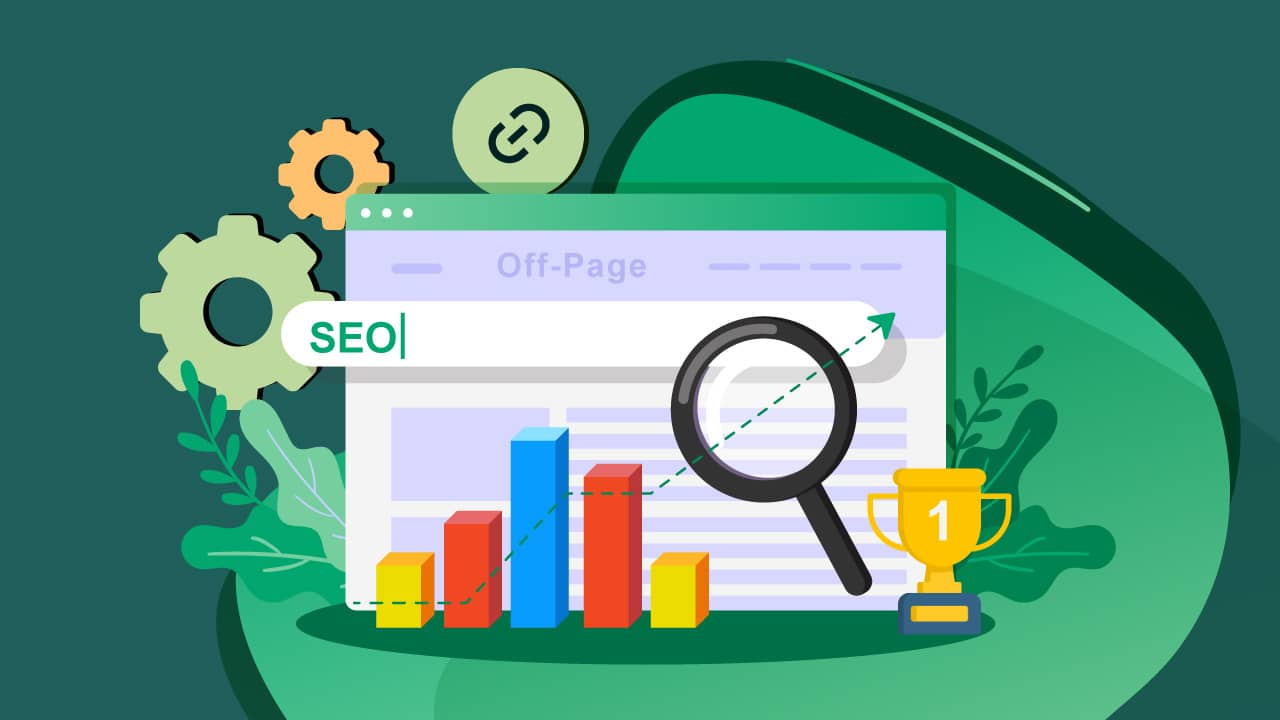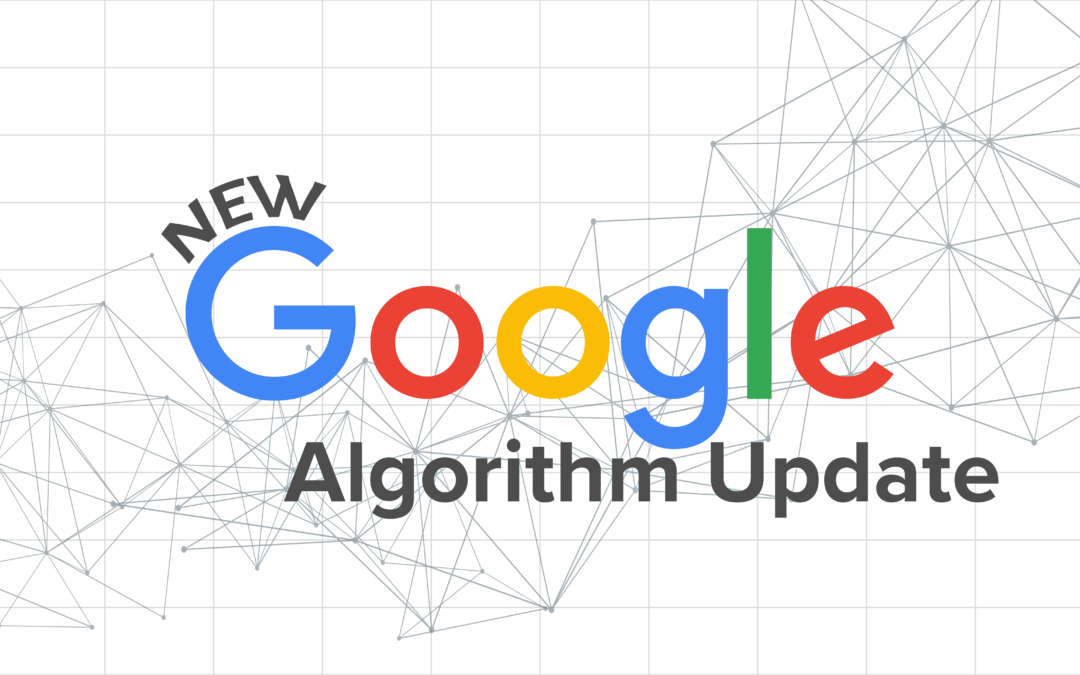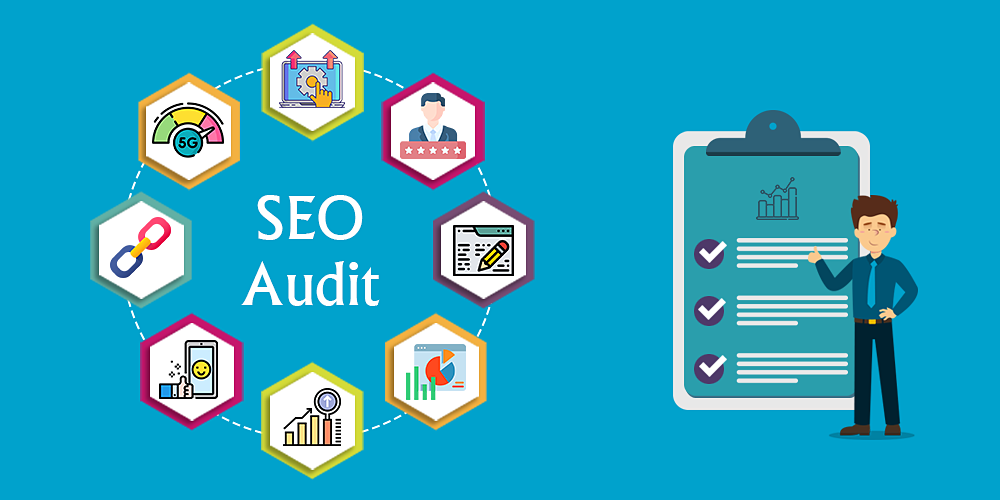In the ever-evolving digital landscape, where competition is fierce and online visibility is paramount, search engine optimization (SEO) stands as a beacon guiding businesses toward online success. However, the journey to higher rankings, increased organic traffic, and improved user engagement isn’t a one-time endeavor. It requires continuous effort, strategic planning, and the ability to adapt to the dynamic algorithms of search engines.
Enter the SEO audit – a powerful tool that acts as a compass on your digital journey. An SEO audit is like a comprehensive health check-up for your website, diagnosing its strengths, weaknesses, and areas for improvement. Think of it as a map that reveals hidden paths to optimization, enabling you to harness the full potential of your online presence.
In this guide, we delve deep into the world of SEO audits, demystifying their purpose, process, and undeniable benefits. Whether you’re a seasoned digital marketer or just dipping your toes into the SEO waters, this guide will equip you with the knowledge and tools to navigate the complexities of the online realm.
Join us as we explore the critical reasons why every website, whether a budding blog or an established e-commerce platform, needs an SEO audit. From uncovering technical glitches that hinder search engine crawlers to optimizing content for maximum impact, an SEO audit serves as a cornerstone in building a strong foundation for sustainable online success.
Understanding Your Current SEO Performance: The First Step Towards Digital Excellence

In the vast realm of the internet, where millions of websites vie for attention, your website’s performance on search engines is akin to a virtual storefront. Just as a well-organized physical store attracts foot traffic, a strong search engine presence draws in organic visitors, potential customers, and valuable opportunities. This is where the critical process of understanding your current SEO performance comes into play.
Measuring Visibility and Reach
Imagine your website as a beacon in the digital ocean, guiding users to valuable information, products, or services. But if your beacon isn’t well-lit, it might go unnoticed amidst the vast waves of content. This is why evaluating your website’s visibility is essential. It involves assessing where your website ranks on search engine results pages (SERPs) for relevant keywords and phrases.
Measuring Click-Through Rates (CTRs)
Keywords are the building blocks of search engine optimization. They act as the bridges connecting user intent to your content. Analyzing your keyword rankings provides insights into how well your website aligns with what users are searching for. Additionally, tracking website traffic stemming from these keywords showcases which areas of your site are attracting the most attention.
Evaluating User Engagement
Search engines not only consider how well you rank but also how engaging your content is. Are users staying on your site, exploring various pages, and interacting with your content? Metrics like bounce rate, time on page, and pages per session provide valuable insights into user behavior, helping you gauge the quality of your content and user experience.
Assessing Conversion Rates
Ultimately, the success of your website isn’t solely about attracting visitors – it’s about converting them into customers, subscribers, or loyal followers. By assessing conversion rates, you can determine which parts of your website’s funnel are effective and where improvements are needed.
Understanding your current performance is the foundation upon which you’ll build your optimization efforts. Armed with insights into your visibility, user engagement, and conversion metrics, you can strategically shape your next steps, identify areas for improvement, and pave the way for a more successful online presence. As we delve deeper into the realm of SEO audits, let’s explore how this understanding serves as the bedrock for unlocking your website’s full potential.
Identifying Technical Glitches and Issues: Peering Beneath the Digital Surface

Your website’s performance isn’t just about captivating content and engaging design; it’s also about the underlying technical framework that supports it. Much like a well-oiled machine, your website needs to function smoothly to ensure both user satisfaction and search engine recognition. This is where the crucial task of identifying technical glitches and issues comes into play.
Crawl Errors and Broken Links
Search engines send out automated bots, commonly known as “crawlers” or “spiders,” to navigate and index your website. Crawl errors and broken links can impede these bots’ progress, leading to incomplete indexing and poor visibility on search engines. Identifying and fixing these errors ensures that search engine crawlers can thoroughly explore your site, leading to better rankings.
Website Loading Speed and Mobile Compatibility
In today’s fast-paced digital world, speed matters. Slow-loading websites can frustrate users and lead to high bounce rates. Moreover, search engines consider page loading speed as a ranking factor. Additionally, with the majority of internet users accessing websites from mobile devices, ensuring mobile responsiveness is crucial for a seamless user experience.
Duplicate Content and Canonical URLs
Duplicate content can confuse search engines, affecting the visibility of your website. It’s essential to identify and rectify instances of duplicate content, ensuring that search engines understand which version of the content is the preferred one. Canonical URLs help in this regard by indicating the authoritative source of the content.
Robots.txt and XML Sitemaps
Robots.txt files control which parts of your website should be accessible to search engine crawlers. Errors in this file can inadvertently block important content from being indexed. XML sitemaps, on the other hand, help search engines understand the structure of your website, ensuring that all relevant pages are crawled and indexed accurately.
SSL Certificates and Security Measures
Website security is paramount, not just for user trust but also for search engine rankings. Sites with SSL certificates (https) are favored by search engines because they ensure encrypted communication between the user’s browser and the server, enhancing data security.
Structured Data and Schema Markup
Structured data and schema markup provide additional context to search engines about the content on your website. This can lead to rich snippets and enhanced search results, increasing your website’s visibility and click-through rates.
By delving into the realm of technical SEO, you’re essentially fine-tuning the engine of your website, ensuring it runs smoothly, efficiently, and effectively. The process of identifying and rectifying technical glitches and issues not only improves user experience but also positions your website for better search engine rankings and increased organic traffic. As we continue our journey through SEO audits, let’s explore how addressing these technical aspects can pave the way for a robust and high-performing digital presence.
Unveiling On-Page Optimization Opportunities: Crafting Content for Success

In the vast digital landscape, where billions of webpages compete for attention, your content is your currency. But creating compelling content isn’t enough – it also needs to be strategically optimized to ensure it reaches the right audience and resonates with search engines. This is where the art of on-page optimization comes into play, revealing a world of opportunities to enhance your content’s impact and search visibility.
Meta Tags, Titles, and Descriptions
Meta tags, titles, and descriptions are your website’s first impression on search engine users. Optimizing these elements involves crafting concise yet descriptive titles and compelling meta descriptions that not only capture the essence of your content but also entice users to click through to your website.
Keyword Usage and Placement
Keywords are the compass that guides search engines and users to your content. Properly researching and strategically integrating relevant keywords into your content helps search engines understand the context and relevance of your pages. However, it’s crucial to strike a balance – keyword stuffing can have the opposite effect.
Keyword Usage and Placement
Organizing your content with appropriate header tags (H1, H2, H3, etc.) enhances readability and helps search engines understand the hierarchy of your information. A well-structured content layout also encourages users to engage with your content for longer periods.
Image Optimization
Images not only enhance visual appeal but also contribute to SEO. Optimizing images by reducing their file size, using descriptive filenames, and adding alt text ensures that search engines can index them accurately. This also improves your website’s accessibility for users with disabilities.
Internal and External Linking
Linking is the backbone of the internet, connecting related information and enhancing user experience. Internal linking helps users navigate your website while distributing authority throughout your pages. External linking to reputable sources adds credibility and context to your content.
Content Quality and Relevance
Search engines value high-quality, relevant content that provides value to users. By creating in-depth, informative, and engaging content, you not only position yourself as an authority in your niche but also increase the likelihood of your content being shared and linked to by others.
User Experience and Engagement
On-page optimization isn’t just about keywords and technical elements; it’s also about user experience. Factors such as page load speed, mobile responsiveness, and interactive elements contribute to how users engage with your content – a crucial aspect that search engines consider.
By delving into the world of on-page optimization, you’re essentially fine-tuning your content to align with both user expectations and search engine algorithms. Every title, keyword, and piece of content becomes a brushstroke in the masterpiece of your digital presence. As we journey deeper into the realm of SEO audits, let’s uncover how on-page optimization can transform your website into a beacon of value and relevance in the digital expanse.
Spotting Backlink and Off-Page SEO Opportunities: Building Bridges Beyond Your Website

In the intricate web of search engine optimization (SEO), your website doesn’t exist in isolation. It’s part of a vast network where connections, credibility, and authority play a pivotal role in determining your digital footprint. This is where the realm of off-page SEO, particularly backlinks, comes into focus – a dynamic landscape that can elevate your website’s visibility and authority to new heights.
The Power of Backlinks
Backlinks, also known as inbound or incoming links, are like digital votes of confidence from other websites. They indicate to search engines that your content is valuable and trustworthy. The more reputable and relevant websites link to your content, the higher your website’s authority becomes in the eyes of search engines.
Link Quality and Relevance
Not all links are created equal. Search engines consider the quality and relevance of the linking site when evaluating backlinks. A single high-quality backlink from a reputable source can hold more weight than several links from lower-quality websites. Relevant backlinks from sites within your niche also enhance the context and authority of your content.
Diversification of Link Sources
A diverse range of link sources is crucial for a natural-looking backlink profile. This includes links from various types of websites – blogs, news sites, forums, social media platforms, and more. Diversification reduces the risk of relying too heavily on a single source, ensuring a more stable and sustainable link profile.
Earning vs. Building Backlinks
While it’s ideal to earn backlinks organically through high-quality content that naturally attracts attention, proactive link building can also be beneficial. Outreach to relevant websites, collaborations, guest posting, and participating in online discussions are ways to build relationships and earn valuable backlinks.
Social Signals and Brand Mentions
Social signals, such as likes, shares, and comments on social media platforms, indirectly impact SEO by enhancing content visibility and potentially attracting backlinks. Similarly, brand mentions across the web, even without direct links, contribute to your website’s online reputation.
Competitor Analysis
Studying your competitors’ backlink profiles can reveal valuable insights and opportunities. Identifying websites linking to your competitors but not to you opens the door to potential outreach and collaboration.
Online Reputation Management
Off-page SEO also involves managing your online reputation. Addressing negative reviews, comments, or mentions promptly and professionally can mitigate potential damage to your website’s credibility.
In the world of off-page SEO, every backlink is a bridge connecting your website to the broader digital landscape. These links not only influence your search engine rankings but also introduce your content to new audiences. As we delve further into the realm of SEO audits, let’s explore how identifying backlink and off-page SEO opportunities can pave the way for a well-connected and authoritative online presence.
Staying Aligned with Algorithm Changes: Navigating the Ever-Evolving SEO Landscape

In search engine optimization (SEO), change is the only constant. Search engines like Google continuously refine their algorithms to provide users with the most relevant and valuable search results. As a website owner or digital marketer, staying aligned with these algorithm changes is not just a strategy – it’s a necessity to maintain and improve your online visibility.
Understanding Algorithm Updates
Search engines’ algorithms are complex sets of rules that determine how websites are ranked in search results. Algorithm updates are adjustments to these rules, often aimed at improving the quality of search results, combating spam, and enhancing user experience. Staying up-to-date with these changes is essential to ensure your website remains visible to your target audience.
Google's Core Updates
Google, being the most widely used search engine, frequently releases core updates that can significantly impact search rankings. These updates can lead to shifts in rankings for websites across various industries. Keeping a pulse on Google’s official announcements and industry news helps you understand the focus of these updates and adapt your strategy accordingly.
Adapting to User Intent
Algorithm updates often prioritize user intent – the underlying reason behind a user’s search query. Search engines aim to provide results that directly address what users are looking for. Therefore, tailoring your content to align with user intent, answering common questions, and addressing user pain points becomes crucial.
Quality Content and User Experience
Algorithm updates emphasize the importance of high-quality content and positive user experiences. Websites with relevant, informative, and engaging content tend to perform well in search rankings. Ensuring fast loading times, mobile responsiveness, and intuitive navigation contributes to a positive user experience.
Avoiding Black Hat Techniques
Algorithm updates are designed to penalize websites that engage in “black hat” SEO techniques – strategies that attempt to manipulate search rankings through deceptive practices. These techniques can lead to severe penalties, including decreased visibility or even removal from search results.
Monitoring Analytics and Performance Metrics
Regularly monitoring your website’s analytics and performance metrics is essential to gauge the impact of algorithm updates on your rankings and traffic. Tracking changes in organic traffic, bounce rates, and conversion rates can provide insights into how your website is adapting to algorithm shifts.
Remaining Adaptable
The SEO landscape is fluid, with algorithm updates introducing new challenges and opportunities. Remaining adaptable and open to adjusting your strategy based on the latest trends and changes is a hallmark of successful SEO efforts.
Staying aligned with algorithm changes isn’t just about keeping up; it’s about thriving in a competitive digital environment. By understanding the nuances of algorithm updates and tailoring your approach to meet evolving requirements, you position your website for sustained visibility and success. As we proceed through the realm of SEO audits, let’s explore how adapting to algorithm changes can be a cornerstone of your SEO strategy.
Creating a Holistic SEO Strategy: Crafting Your Path to Digital Excellence

In the intricate tapestry of the digital landscape, search engine optimization (SEO) isn’t a mere thread – it’s the very fabric that weaves together online success. But SEO is no longer just about keywords and backlinks; it’s a dynamic ecosystem that demands a strategic, holistic approach. Crafting a comprehensive SEO strategy is akin to orchestrating a symphony, where each element harmonizes to create a masterpiece of online visibility, user engagement, and sustainable growth.
Setting Clear Objectives
Like any journey, your SEO strategy needs a destination. Define clear objectives – whether it’s increasing organic traffic, improving conversion rates, or enhancing brand awareness. These objectives will guide your actions and measurements.
Audience and Keyword Research
Understanding your target audience is the foundation of your strategy. Conduct thorough research to uncover what your audience is searching for, their pain points, and how your offerings can meet their needs. Identify high-potential keywords that align with user intent.
Content Strategy and Creation
Quality content is the heart of successful SEO. Develop a content strategy that addresses user questions, provides value, and aligns with your keywords. This includes blog posts, infographics, videos, and other formats that resonate with your audience.
On-Page and Technical Optimization
Ensure that every piece of content is optimized for both users and search engines. This involves fine-tuning meta tags, headers, images, and improving website speed, mobile responsiveness, and overall user experience.
Link Building and Outreach
Forge meaningful connections within your industry by building high-quality, relevant backlinks. Engage in strategic outreach, guest posting, and collaboration to earn authoritative links that enhance your website’s credibility.
Social Media Integration
Social signals play a role in SEO, as they indicate content popularity and engagement. Integrate your SEO strategy with your social media efforts, sharing and promoting content to increase visibility.
Measuring and Analytics
Implement tools like Google Analytics to monitor your website’s performance. Track key metrics such as organic traffic, keyword rankings, bounce rates, and conversion rates to gauge the effectiveness of your strategy.
Adapting to Trends and Algorithms
Stay informed about industry trends and search engine algorithm updates. Adapt your strategy to align with evolving best practices and user behavior.
Regular Audits and Continuous Improvement
Conduct regular SEO audits to identify strengths, weaknesses, and areas for improvement. A continuous improvement mindset ensures that your strategy remains agile and responsive to changes.
Integration with Overall Marketing
A holistic SEO strategy isn’t isolated; it’s an integral part of your overall marketing efforts. Align your SEO strategy with other marketing channels for a cohesive and synergistic approach.
Education and Collaboration
Invest in ongoing education to stay updated with the latest SEO trends and techniques. Collaborate with your team, industry peers, and SEO professionals to gain fresh perspectives and insights.
Creating a holistic SEO strategy isn’t a one-time task; it’s an ongoing journey of refinement and adaptation. As we journey deeper into the world of SEO audits, let’s explore how a well-crafted strategy can propel your website to the forefront of the digital landscape, driving organic growth and unlocking digital excellence.
Measuring and Tracking Progress: Navigating Your SEO Journey with Data

In the intricate labyrinth of search engine optimization (SEO), data isn’t just a tool – it’s your compass, guiding you through the ever-evolving digital landscape. Measuring and tracking progress isn’t an optional step; it’s the essential thread that weaves your strategy together, illuminating the path to success and revealing the insights that shape your next steps.
Defining Key Performance Indicators (KPIs)
Before you embark on your SEO journey, set clear Key Performance Indicators (KPIs). These metrics will serve as your benchmarks for success. Whether it’s organic traffic growth, keyword ranking improvements, or increased conversions, well-defined KPIs keep your efforts focused.
Google Analytics: Your Insightful Ally
Google Analytics is your trusted ally in measuring website performance. It provides a wealth of information, from the number of visitors and pageviews to user behavior patterns, referral sources, and more. Understanding these metrics helps you gauge the effectiveness of your strategy.
Tracking Organic Search Traffic
Organic search traffic is the lifeblood of SEO success. Monitor how many visitors find your website through search engines and observe trends over time. This metric is a direct reflection of your website’s visibility on search engine results pages.
Keyword Ranking Monitoring
Track the ranking positions of your targeted keywords in search results. Tools like Google Search Console or third-party SEO software can help you monitor these positions and identify fluctuations.
Bounce Rates and User Engagement
Bounce rates – the percentage of visitors who leave your site after viewing only one page – offer insights into user engagement. High bounce rates may indicate a need for improved content or a clearer user journey.
Conversion Rates and Goals
Ultimately, SEO is about achieving goals – whether it’s sales, sign-ups, or downloads. Monitor conversion rates to see how effectively your website turns visitors into customers or leads.
Backlink Growth and Quality
If backlinks are a part of your strategy, keep track of the number and quality of links your website earns. Quality links from reputable sources contribute to your website’s authority.
Content Performance Metrics
For a content-focused strategy, measure the performance of individual pieces. Look at metrics like pageviews, time on page, and social shares to understand what content resonates most with your audience.
Mobile and Page Speed Metrics
In the age of mobile browsing, mobile-friendliness and page speed are crucial. Monitor mobile traffic and load times to ensure a smooth user experience.
Regular Reporting and Analysis
Create regular reports that summarize your progress and highlight areas for improvement. Analyze these reports to identify patterns, trends, and opportunities for optimization.
A Data-Driven Journey
Measuring and tracking progress isn’t just about numbers; it’s about insights. Data empowers you to make informed decisions, pivot when necessary, and optimize your strategy for better results. As we continue our exploration of SEO audits, let’s delve into how a data-driven approach can transform your website’s performance and lead you toward digital triumph.
Future-Proofing Your Digital Presence: Navigating SEO's Ever-Evolving Horizon

In the dynamic realm of the digital landscape, change isn’t a possibility – it’s a certainty. Search engines evolve, user behaviors shift, and technology marches forward. To thrive in this ever-changing environment, future-proofing your digital presence isn’t just a strategy – it’s a mindset. It’s about equipping your website with the resilience, adaptability, and foresight to not only survive but also excel in the face of technological and algorithmic shifts.
Embrace the Agile Mindset
The first step in future-proofing is adopting an agile mindset. Understand that your website’s success isn’t a destination but a journey of constant adaptation. Be ready to pivot, experiment, and learn from both successes and setbacks.
Stay Ahead of Algorithm Changes
Algorithm updates are the heartbeat of SEO. Stay informed about the latest changes and adapt your strategies accordingly. Prioritize user intent, high-quality content, and positive user experiences, as these factors tend to withstand algorithmic shifts.
Mobile-First and User Experience
Mobile browsing continues to dominate, making mobile-friendliness non-negotiable. Design for mobile users first, ensuring seamless experiences across devices. Fast load times, intuitive navigation, and responsive design are your allies.
Voice Search and Semantic SEO
Voice search is on the rise, demanding a shift from keyword-centric to conversational content. Embrace semantic SEO, focusing on answering user queries naturally and comprehensively.
AI and Machine Learning
AI and machine learning are shaping search results. Understand how these technologies work and explore ways to integrate them into your SEO strategy, from chatbots to content recommendations.
E-A-T: Expertise, Authoritativeness, Trustworthiness
Google places a premium on E-A-T – expertise, authoritativeness, and trustworthiness. Showcase your expertise through authoritative content and transparently demonstrate your trustworthiness.
User-First Content Strategy
Prioritize user needs over search engines. Crafting content that solves problems, educates, and entertains will always be relevant.
Structured Data and Rich Snippets
Structured data provides context to search engines. Implement it to enhance your content’s appearance in search results, increasing visibility and click-through rates.
Adapt to New Content Formats
Video, podcasts, interactive content – embrace emerging content formats. Diversify your content to engage different types of audiences.
Secure Your Website
Security is non-negotiable. Ensure your website is protected with SSL certificates and adheres to security best practices.
Continual Learning and Adaptation
SEO isn’t stagnant; it’s a field of constant evolution. Invest in continuous learning, attend industry events, and network with experts to stay at the forefront of changes.
Future-Proofing: Your SEO Legacy
Future-proofing your digital presence isn’t about predicting every twist and turn. It’s about cultivating a proactive, adaptable mindset that empowers you to weather change and leverage opportunities. As we conclude our exploration of SEO audits, remember that your digital legacy is built on your ability to embrace change and carve your path to enduring online excellence.
Conclusion: Empowering Your Digital Journey Through SEO Audits

In the vast and ever-evolving realm of the digital landscape, where countless websites vie for attention, standing out requires more than just a well-designed interface or compelling content. It demands a comprehensive understanding of your website’s strengths, weaknesses, and untapped potential. This is where the undeniable significance of SEO audits shines through – an essential process that acts as a guiding light on your journey toward online success.
A Roadmap to Optimization
SEO audits are more than just a mere examination; they’re a roadmap to optimization. They offer a panoramic view of your website’s performance, illuminating the paths that lead to enhanced visibility, improved rankings, and increased organic traffic. Through in-depth analysis and meticulous scrutiny, SEO audits uncover hidden technical glitches, identify content optimization opportunities, and reveal the strategic steps needed to captivate both search engines and users.
Holistic Understanding for Strategic Growth
At the core of every SEO audit lies the essence of understanding – understanding your website’s current state, its position within the competitive landscape, and the aspirations you have for its digital future. Armed with this knowledge, you can craft a holistic SEO strategy that aligns with your goals, adapts to algorithmic changes, and remains agile in the face of evolving trends.
A Foundation for Sustainable Success
The benefits of an SEO audit extend beyond immediate improvements. They establish a foundation for sustainable success. By addressing technical issues, optimizing content, and enhancing user experience, you’re not only boosting your website’s present performance but also fortifying its resilience for the challenges and opportunities that lie ahead.
Empowerment Through Insights
SEO audits empower you with insights – insights that demystify the complexities of search engine algorithms, unveil the power of strategic optimization, and provide a tangible roadmap to elevate your digital presence. Armed with these insights, you’re equipped to make informed decisions, allocate resources effectively, and navigate the digital landscape with confidence.
In the dynamic world of digital marketing, an SEO audit isn’t an option; it’s a necessity. It’s a proactive step that empowers you to take control of your online destiny, crafting a narrative of visibility, relevance, and success. As you embark on your journey armed with the insights gained from this exploration, remember that an SEO audit isn’t just a checkpoint – it’s a transformative experience that propels your digital presence toward new horizons of excellence.



